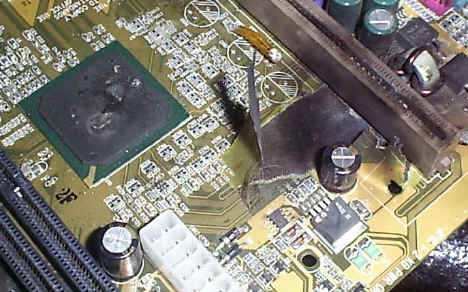Last updated January 17, 2024

Theft is the biggest fear of any smartphone owner. The average phone contains dozens of apps that enable the user to access and manage their financial and personal information. While most phones have anti-theft software to track the location of the handset and remotely delete the data, not all users activate these features.
Another fear exists that criminals may be able to deactivate, hack or disable anti-theft software once they steal the phone. Now, researchers at Iowa State University believe they may have found a way to eliminate smartphone theft.
Melting Circuits: Anti-Theft
Researchers at Iowa State have developed circuits that can melt on demand when just a single drop of water is introduced. This renders the circuit useless and could become a highly effective anti-theft device for smartphones of the future. For instance, if a tiny vial containing just a drop of water was to be positioned in the smartphone over the circuit, it could be remotely controlled to break and dissolve the circuit.

This would render the smartphone inert. Who would steal a phone knowing that it would have no resale value or use? If stolen, the owner of the smartphone could simply send a command to their handset to cause it to self-destruct.
How Self-Degrading Circuits Work
Researchers have developed special polymers that completely melt away when a trigger is activated. They created a blue light-emitting diode (LED) and mounted it on a clear polymer base.

A video of the test was published to YouTube and also shown on the official website of the Advanced Materials Lab, Iowa State University. The video shows how the LED’s electrical wires were embedded inside the polymer composite base. A single drop of water causes the base and wiring to melt away.
Researchers have also developed transient resistors, degradable antenna and capacitors that could be used inside smartphones.
From Theory To Reality
Some of this research has already been presented to the American Chemical Society in Dallas. The Iowa State Researchers also published a paper outlining their findings in the journal Advanced Functional Materials.
There is hope that this technology could one day be used in smartphones to deter thieves and protect the data of smartphone owners. Self-degrading components could be used inside smartphones to prevent users’ data from falling into the wrong hands. This would diminish the incidence of smartphone theft and help to reduce the impact that theft has.
Conclusion
Major smartphone manufacturers such as Apple and Samsung prefer to develop technology in-house so it could be many years before we see self-degrading components inside smartphones.
At the time of writing, the components mentioned in this article have not been tested or rated for use inside electronic consumer gadgets. Self-degrading components appear to offer a potential solution to help smartphone users protect their personal and financial data.